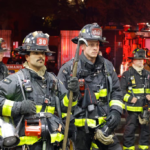Tuesday, February 27, 2024
Year : 2, Issue : 9
‘An ominous presence’: New York City bill aims to restrict cruise ship pollution
Efforts to regulate how cruise ships operate in New York City waterways have locals speaking out about the negative effects the vessels have had on their communities – and their health.
More than 200 cruise ships dock in New York each year, bringing an estimated 1.3 million passengers and $420m in tourism spending to the city. But the industry takes an environmental toll: just one cruise ship docked for a day at port can emit diesel exhaust equivalent to 34,400 idling trucks.
Aerial view of an industrial plant, East St. Louis, Missouri
‘Safe’ air-quality levels in US, UK and EU still harmful for health, study says.
A new bill in the city council would crack down on diesel-powered luxury liners, requiring them to connect to the city’s power grid when docked, thus lowering their emissions. The bill would also tackle traffic, noise and pollution related to disembarking passengers. If passed, New York would become the first city on the east coast to pass such an ordinance.
The move comes nearly a year after one of the world’s largest cruise ships, the 5,600-passenger MSC Meraviglia, started docking in Brooklyn. Residents soon complained of traffic congestion related to the nearly 600 vehicles that arrived to transport passengers to destinations in the city.
A representative for the Economic Development Corporation (NYCEDC), the non-profit that runs the cruise terminals, said that new long-term agreements with three major cruise operators (which account for 85% of the city’s cruise traffic) require ships docking at the Manhattan and Brooklyn terminals to connect to shore power “when feasible” and involve traffic mitigation plans.
They also said they were procuring a mobile jib that would allow more ships to connect at the Brooklyn cruise terminal, adding “NYCEDC is deeply committed to ensuring that the industry has an environmentally sound and sustainable future in New York.
Red Hook has one of the highest rates of asthma-related emergency visits in New York City.
Source: The Guardian







